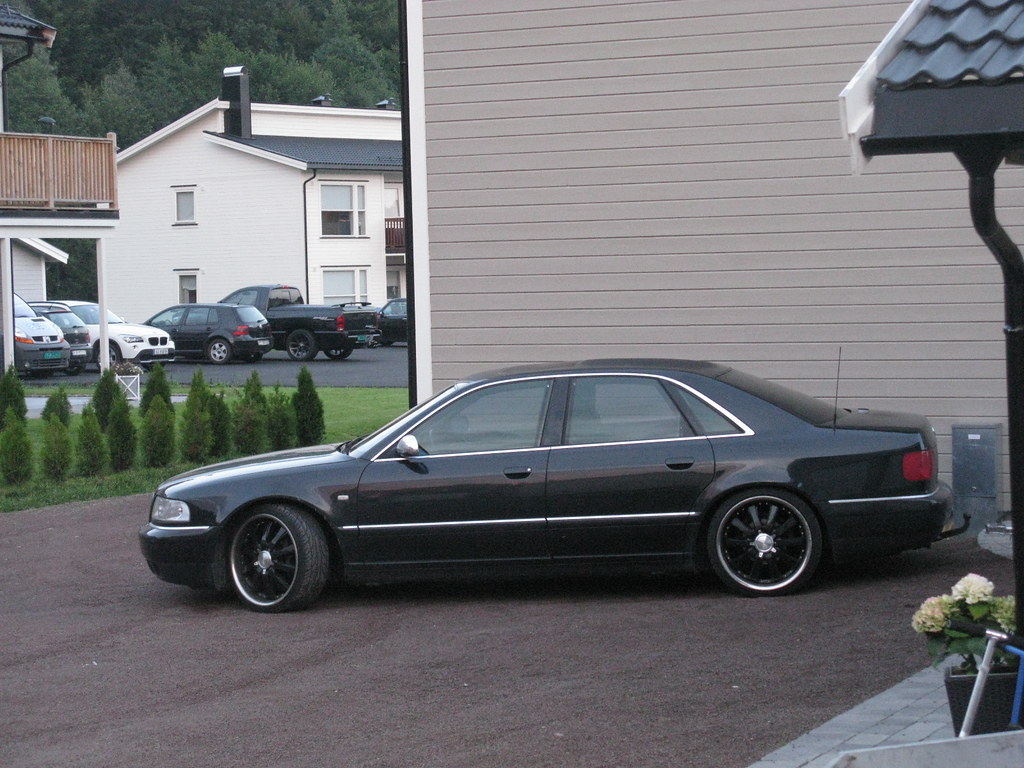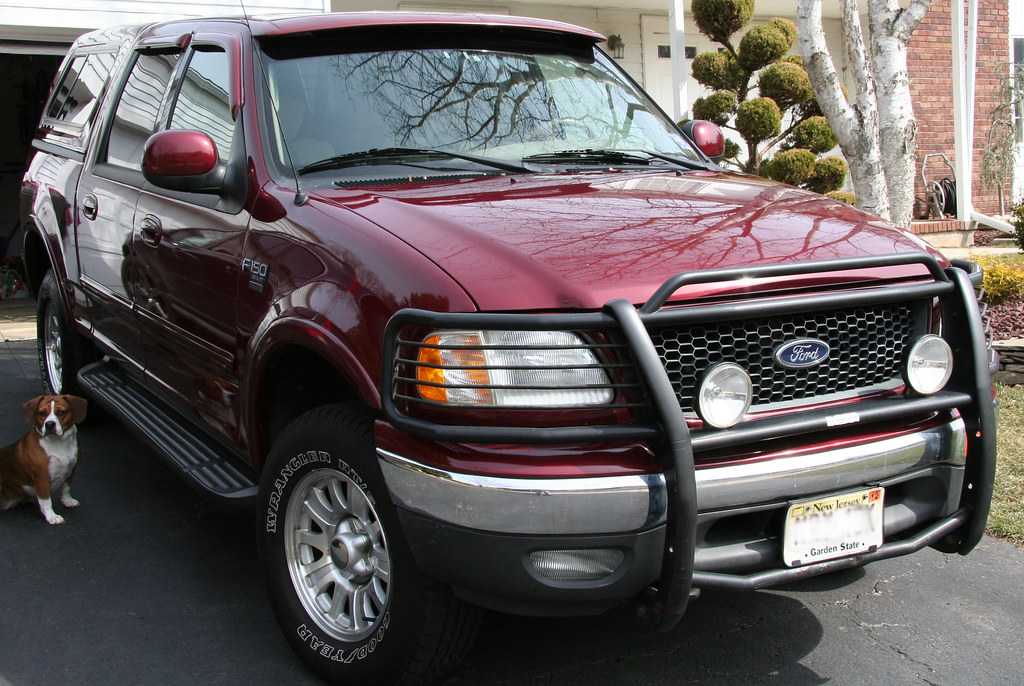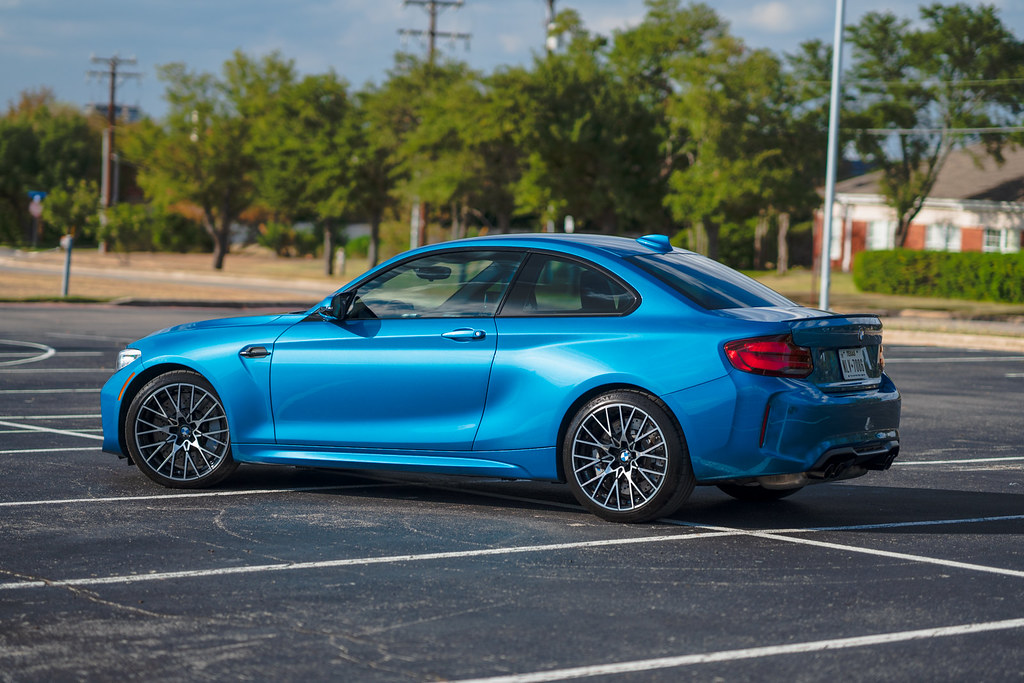
The allure of a new or pre-owned vehicle is undeniable, promising freedom, performance, or luxurious comfort. However, the initial purchase price often masks a complex web of ongoing financial commitments. Savvy automotive enthusiasts and pragmatic car owners understand that true ownership costs extend far beyond the showroom, encompassing everything from registration and insurance to routine maintenance and, inevitably, repairs.
Indeed, some vehicles, while offering exceptional driving experiences or advanced features, are notorious for their ability to drain wallets with startlingly high repair bills. As seasoned automotive journalists, our aim is to shed light on this crucial aspect of car ownership. We’ll identify specific models that frequently top the charts for costly repairs and analyze the systemic reasons behind these expenses, from specialized parts to complex technical architectures.
Drawing on comprehensive data, including insights from RepairPal and other industry experts, this article will serve as an authoritative guide. We believe that an informed decision at the time of purchase is your best defense against unexpected financial setbacks down the road. Let’s navigate this automotive minefield together, starting with some of the most prominent offenders.
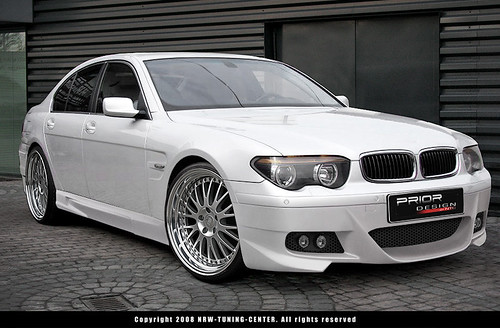
1. BMW 7 Series
When it comes to the pinnacle of luxury sedans, the BMW 7 Series stands out with its seamless blend of supreme comfort, cutting-edge technology, and exhilarating performance. Yet, this sophistication comes with a significant caveat: a corresponding price tag when it comes to keeping it on the road. Owners frequently encounter substantial labor costs, largely due to the proprietary equipment and specialized software required for even seemingly minor diagnostic procedures or repairs.
The intricate engineering that defines the 7 Series means that its components are often unique to the brand. Replacing these specialized parts, especially those related to its advanced electronics systems or carbon fiber components, involves proprietary manufacturing processes that are inherently costly. This specialized nature of parts and the necessary expertise for their installation directly contribute to the inflated repair expenses.
For instance, issues pertaining to the BMW 7 Series’ complex electrical systems or critical transmission failures are not uncommon, and they can easily see repair bills soaring past the $5,000 mark. These figures highlight why the brand consistently ranks among the most expensive to maintain and repair, with an average annual cost of $968 according to RepairPal. This is a clear example of how luxury and imported vehicles universally demand more expensive parts and labor.
Furthermore, the detailed and analytical approach needed for such vehicles means that standard mechanics may not possess the necessary tools or training. Factory-trained technicians, equipped with brand-specific knowledge, are often the only ones qualified, driving up hourly labor rates. This specialized expertise is a critical factor in understanding the financial commitment required to maintain a BMW 7 Series at its optimum level of performance and luxury.
Car Model Information: 2024 Ford Mustang GT Premium
Name: BMW 7 Series
Caption: BMW 7 Series (G11)
Manufacturer: BMW
Production: 1977–present
Class: Full-size car,luxury car
BodyStyle: sedan (car)
Predecessor: BMW New Six
Categories: All articles with dead external links, Articles with dead external links from July 2021, Articles with short description, BMW vehicle series, CS1 Chinese-language sources (zh)
Summary: The BMW 7 Series is a full-size luxury sedan manufactured and marketed by the German automaker BMW since 1977. It is the successor to the BMW E3 “New Six” sedan and is now in its seventh generation.
The 7 Series is BMW’s flagship car and is only available in a sedan bodystyle (including long wheelbase and limousine models). It traditionally introduces technologies and exterior design themes before other models in BMW’s lineup.
The first generation of the 7 Series was powered by straight-6 petrol engines, and following generations have been powered by inline-4, straight-6, V8 and V12 engines with both natural aspiration and turbocharging. Since 1995, diesel engines have been optional in the 7 Series.
Unlike the BMW 3 Series and BMW 5 Series sedans, BMW does not offer a full M model, but once offered an M performance variant, the BMW M760 with its 6.6L V12 (at the time the most powerful BMW ever made, not to be confused with BMW 760 6.6 V12 which does not offer the same performance). The Alpina B7 served as the high-performance variant of the 7 Series.
Get more information about: BMW 7 Series
Buying a high-performing used car >>>
Brand: BMW Model: 7 Series
Price: $48,997 Mileage: 24,328 mi.
Read more about: 15 Classic Cars You Might Want To Skip: An Expert Guide for Discerning Collectors

2. Tesla Model S
Tesla has undeniably revolutionized the automotive industry, leading the charge in the electric vehicle (EV) market with its innovative Model S. While offering unparalleled acceleration and advanced autonomous capabilities, ownership of a Model S also brings with it a unique set of financial considerations, particularly when repairs are required. The state-of-the-art nature of these vehicles means their upkeep can be far from budget-friendly.
One of the most significant potential repair costs for the Tesla Model S revolves around its core component: the battery. Replacements for these high-voltage battery packs can be exceptionally expensive, with some cases reportedly costing upwards of $20,000. Even the average costs for hybrid high-voltage battery replacements, as noted by RepairPal data, are substantial, typically ranging from $6,645 to $6,719. A specific case study cited revealed a Model S owner facing a whopping $16,000 bill for battery degradation, underscoring the severity of such an expense.
Beyond the battery, the Model S’s heavy reliance on integrated software and advanced touchscreen technology presents another avenue for costly repairs. What might appear to be a straightforward fix, such as replacing the large central touchscreen console, is often much more complicated. This is due to its deep integration with the car’s central operating system, leading to costs that can reach upwards of $1,500 for the replacement alone.
This intricate technological ecosystem means that even minor software updates or component malfunctions may necessitate professional recalibration or specialized diagnostic procedures. Such services require technicians with highly specific training in EV systems and software, resulting in pricier labor costs. The Model S embodies how cutting-edge technology, while enhancing the driving experience, can also significantly escalate repair expenses.
Car Model Information: 2021 Nissan Rogue SL
Name: Tesla Model S
ModelYears: 2013–present
Alt: A front-three quarter view of a gray Model S
Caption: #2016–2019: First major update
Designer: Franz von Holzhausen
Weight: cvt
Height: cvt
Width: cvt
Length: cvt
Wheelbase: cvt
ElectricRange: cvt
Battery: kWh,lithium-ion battery
Motor: Unbulleted list
Transmission: Reduction drive
Related: Tesla Model X
Layout: Rear-motor, rear-wheel drive,Dual-motor, all-wheel-drive,Tri-motor, all-wheel-drive layout
BodyStyle: liftback,sedan (automobile)
Class: Full-size car
Assembly: Unbulleted list
Production: June 2012 – present
Manufacturer: Tesla, Inc.
Sp: us
Chassis: Unibody
Categories: 2020s cars, All-wheel-drive vehicles, All Wikipedia articles written in American English, All articles containing potentially dated statements, Articles containing potentially dated statements from 2025
Summary: The Tesla Model S is a battery-electric, four-door full-size car produced by the American automaker Tesla since 2012. The automaker’s second vehicle and longest-produced model, the Model S has been described as one of the most influential electric cars in the industry. Car and Driver named it one of the best cars of the year in 2015 and 2016. Its various accolades include the Motor Trend Car of the Year Award in 2013.
Tesla started developing the Model S around 2007 under the codename WhiteStar. Initially, Henrik Fisker was appointed as the lead designer for the WhiteStar project; after a dispute with Elon Musk, Tesla’s CEO, Fisker was replaced by Franz von Holzhausen. By 2008, von Holzhausen had designed what would become the production Model S’s exterior. Tesla unveiled a prototype of the vehicle in March 2009 in Hawthorne, California. In 2010, Tesla acquired a facility in Fremont, California, to produce the Model S, which was previously owned by General Motors and Toyota. Series manufacture of the car officially began at the Tesla Fremont Factory in June 2012. Tesla carried out the final assembly for European markets at its facilities in Tilburg, Netherlands, between 2013 and 2021.
The Model S typically uses either one or initially two alternating current induction motors; since 2019, dual-motor versions have used a permanent magnet motor in the front, though the high-performance Model S Plaid’s three motors are permanent magnet units by default. Constructed mostly of aluminum, the Model S shares 30 percent of its components with the Model X—a crossover SUV that was introduced in 2015. The Model S has undergone several updates during its production, the most prominent ones occurring in 2016 and 2021. These updates have usually included modifications to the motor, such as changes to power or torque, revised exterior elements, and refreshed interior features. One such change included the 2015 introduction of Tesla Autopilot—a partial vehicle automation advanced driver-assistance system.
In 2015, the Model S was the world’s best-selling plug-in electric vehicle. In 2012, it was included on Time’s list of the Best Inventions of the Year, and the magazine later included it on its list of the 10 Best Gadgets of the 2010s in 2019. In 2014, The Daily Telegraph described the Model S as a “car that changed the world”. Road & Track argued that, with the introduction of the Plaid and features such as the yoke steering wheel, Tesla managed to turn the Model S into “perhaps one of the worst [cars in the world]”.
Get more information about: Tesla Model S
Buying a high-performing used car >>>
Brand: Tesla Model: Model S
Price: $20,995 Mileage: 117,217 mi.
Read more about: 12 New Cars Named ‘Best Buys’ for 2025: An Expert Guide for Savvy Shoppers
3. Audi A8
As another stalwart in the luxury sedan segment, the Audi A8 is celebrated for its sophisticated ride quality, advanced features, and powerful engine options. Yet, much like its high-end German counterparts, the A8’s advanced design and premium components translate directly into complex and often pricey repairs. Owners should be prepared for substantial investments when unforeseen issues arise, particularly concerning its hallmark systems.
Central to the A8’s refined driving dynamics is its advanced suspension system. While providing an exceptionally smooth and controlled ride, this system can become a significant financial liability when components wear or malfunction. A suspension repair or complete replacement can easily cost over $3,500, a figure that is unfortunately quite common for luxury sedans of this caliber. One case study explicitly mentioned a faulty air suspension system costing an owner nearly $4,000 to fix.
The high-performance engine, another key characteristic of the Audi A8, also contributes to its elevated repair costs. The intricate engineering and precise tolerances required for optimal operation mean that repairs to engine components are often complex and demand specialized knowledge. This complexity, combined with the cost of proprietary parts, ensures that any major engine work will be a considerable expense.
Furthermore, even routine maintenance for the Audi A8 doesn’t come cheap, reflecting the overall premium associated with owning such a meticulously engineered vehicle. Audi, like BMW, is consistently listed among the most expensive brands to maintain and repair, with an average annual cost of $987. This reinforces the principle that luxury brands, with their bespoke parts and intricate designs, will invariably require a larger maintenance budget.
Car Model Information: 2025 Audi A8 L 55
Name: Audi A8
Manufacturer: Audi AG
Assembly: Neckarsulm
Production: #D2
Class: Full-size,luxury car
BodyStyle: sedan (automobile)
Platform: List of Volkswagen Group platforms
Layout: FF layout
Related: Audi S8
Predecessor: Audi V8
Categories: 2000s cars, 2010s cars, 2020s cars, All-wheel-drive vehicles, All articles lacking reliable references
Summary: The Audi A8 is a full-size luxury sedan manufactured and marketed by the German automaker Audi since 1994. Succeeding the Audi V8, and now in its fourth generation, the A8 has been offered with either front- or permanent all-wheel drive and in short- and long-wheelbase variants. The first two generations employed the Volkswagen Group D platform, with the current generation deriving from the MLB platform. After the original model’s 1994 release, Audi released the second generation in late 2002, the third in late 2009, and the fourth and current iteration in 2017. Noted as the first mass-market car with an aluminium chassis, all A8 models have used this construction method co-developed with Alcoa and marketed as the Audi Space Frame.
A mechanically upgraded, high-performance version of the A8 debuted in 1996 as the Audi S8. Produced exclusively at Audi’s Neckarsulm plant, the S8 is fitted standard with Audi’s quattro all-wheel drive system. The S8 was only offered with a short-wheelbase for the first three generations, being joined by a long-wheelbase variant for the fourth generation.
Get more information about: Audi A8
Buying a high-performing used car >>>
Brand: Audi Model: A8
Price: $77,428 Mileage: 935 mi.
Read more about: Robert Redford: The Last American Movie Star – An In-Depth Look at a Screen Legend’s Enduring Legacy and Impact
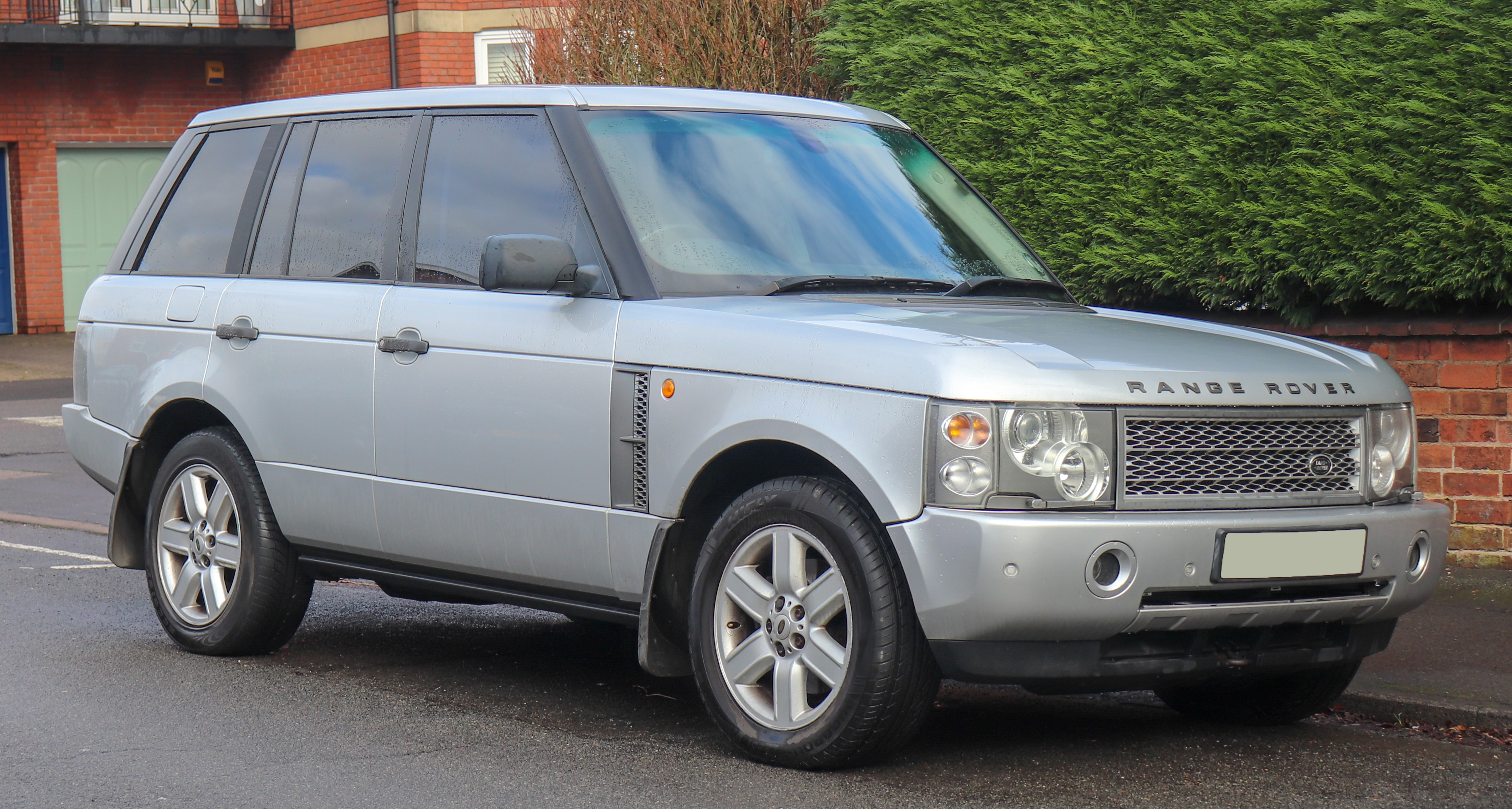
4. Range Rover Vogue
The Range Rover Vogue is an iconic symbol of luxury paired with rugged off-road capability, a dream vehicle for many who desire both opulence and adventure. However, this blend of high-end luxury and robust utility comes with a steep price tag when it transitions from showroom floor to the service bay. Owners often find that maintaining the Vogue in its optimum condition demands significant annual outlays, highlighting a critical aspect of its ownership.
RepairPal data assigns the Range Rover Vogue a reliability rating of just 2 out of 5, indicating that it is more prone to needing repairs than many other vehicles. The average annual repair cost for this majestic SUV is approximately $1,258, a figure substantially higher than the overall average. Moreover, the probability of it requiring a major repair within a decade of ownership stands at a significant 50.6%, underscoring the financial risk involved.
Common problems that afflict the Range Rover Vogue often include complex air suspension issues and intricate electrical faults. Both of these types of repairs can easily run into thousands of dollars to rectify. The advanced systems that enable its luxurious ride and array of features are precisely what make their repair so expensive, requiring highly specialized diagnostic tools and expertise.
In fact, vehicles like the Range Rover Evoque, and by extension the Vogue, frequently necessitate the attention of factory-trained technicians. These specialists, with their brand-specific training and unique repair procedures, command higher labor rates compared to services at standard repair shops. This specialized labor, combined with the cost of rare or imported parts, solidifies Land Rover’s position as one of the most expensive brands to maintain and repair, with an average annual cost of $1,174.
Car Model Information: 2021 Nissan Rogue SL
Caption: 2022 Range Rover SE P440e (L460, fifth generation, United Kingdom)
Aka: unbulleted list
Name: Range Rover
Manufacturer: unbulleted list
Production: 1969–present
Assembly: unbulleted list
Class: unbulleted list
Layout: Front-engine, four-wheel-drive layout
Sp: uk
Categories: 1980s cars, 1990s cars, 2000s cars, 2010s cars, 2020s cars
Summary: The Land Rover Range Rover, generally shortened to Range Rover, is a 4WD luxury mid to full size crossover marque and sub-brand of Jaguar Land Rover, owned by India-based Tata Motors. The Range Rover line was launched in 1970 by British Leyland and since 2022 is in its fifth generation.
Additional models have been launched under the Range Rover name, including the Range Rover Sport, Range Rover Evoque, and Range Rover Velar.
Get more information about: Range Rover
Buying a high-performing used car >>>
Brand: Range Rover Model: Vogue
Price: $20,995 Mileage: 117,217 mi.
Read more about: Beyond the Bell Bottoms: Unpacking the Fates of Hollywood’s Most Iconic 1970s Stars – Where Are They Now?
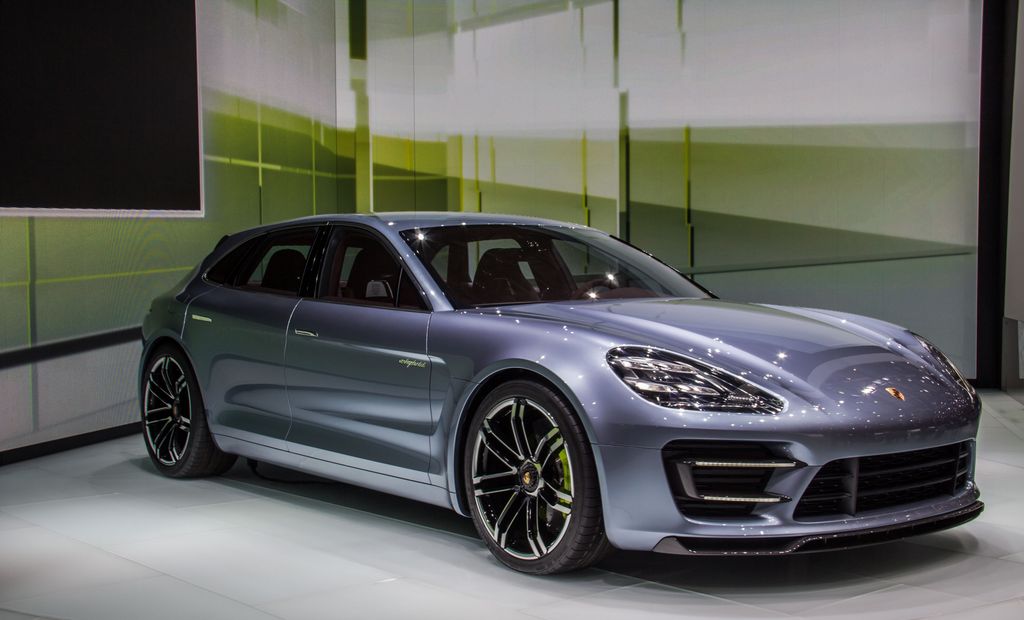
5. Porsche Panamera
Porsche is synonymous with precision engineering, exhilarating performance, and a meticulous attention to detail that elevates its vehicles to an art form. The Panamera, a luxury sports sedan, embodies these characteristics, offering a driving experience that few competitors can match. Yet, despite its exceptional build quality, maintaining a Porsche Panamera is far from an economical endeavor, a reality that prospective owners must fully appreciate.
One of the most significant areas for costly repairs in the Panamera stems from its advanced powertrain, particularly the turbo systems and drivetrain components. Should these highly specialized and performance-tuned systems require attention, owners can find themselves facing repair bills that soar to $10,000 or even more. The complexity of these systems and the bespoke parts involved make any intervention a major financial event.
Beyond these critical, high-cost repairs, even the more routine service appointments for the Porsche Panamera tend to be significantly more expensive than those for standard vehicles. It’s not uncommon for basic maintenance visits to be two or three times costlier, reflecting the specialized tools, fluids, and expertise required to service such a high-performance machine properly.
The overall ownership cost is further impacted by Porsche’s position as one of the most expensive brands to maintain and repair, with an average annual cost of $1,192 according to RepairPal. This is a testament to the brand’s philosophy of using high-end materials and sophisticated designs that, while enhancing performance and luxury, invariably drive up the cost of replacement parts and specialized labor.
Car Model Information: 2018 Porsche Panamera Base
Name: Porsche Panamera
Caption: 2024 Porsche Panamera (976)
Manufacturer: Porsche
Production: 2009–present
Assembly: Leipzig
Class: Luxury car
Layout: Front-engine, rear-wheel-drive layout
Predecessor: Porsche 989
Sp: uk
Categories: 2010s cars, 2020s cars, All-wheel-drive vehicles, All articles containing potentially dated statements, All articles with unsourced statements
Summary: The Porsche Panamera is a mid- to full-sized luxury car (E-segment or F-segment for LWB in Europe) manufactured and marketed by German automobile manufacturer Porsche. It currently spans across three generations, using a front-engine and rear- or all-wheel drive configuration.
The Panamera debuted at the 13th Auto Shanghai International Automobile Show in April 2009, later launching hybrid and diesel versions in 2011. In April 2013, the company introduced a facelifted model, again at the Shanghai Auto Show, followed by the US introduction of a plug-in hybrid version, the Panamera S E-Hybrid, in November 2013. Porsche launched the second-generation Panamera in 2016, and in November 2023, the third generation was introduced.
The Panamera name, as with the Carrera name, is derived from the Carrera Panamericana race.
Get more information about: Porsche Panamera
Buying a high-performing used car >>>
Brand: Porsche Model: Panamera
Price: $40,888 Mileage: 56,253 mi.
Read more about: What Happened to Them? A Deep Dive into 14 Iconic European and American Cars That Disappeared from Production
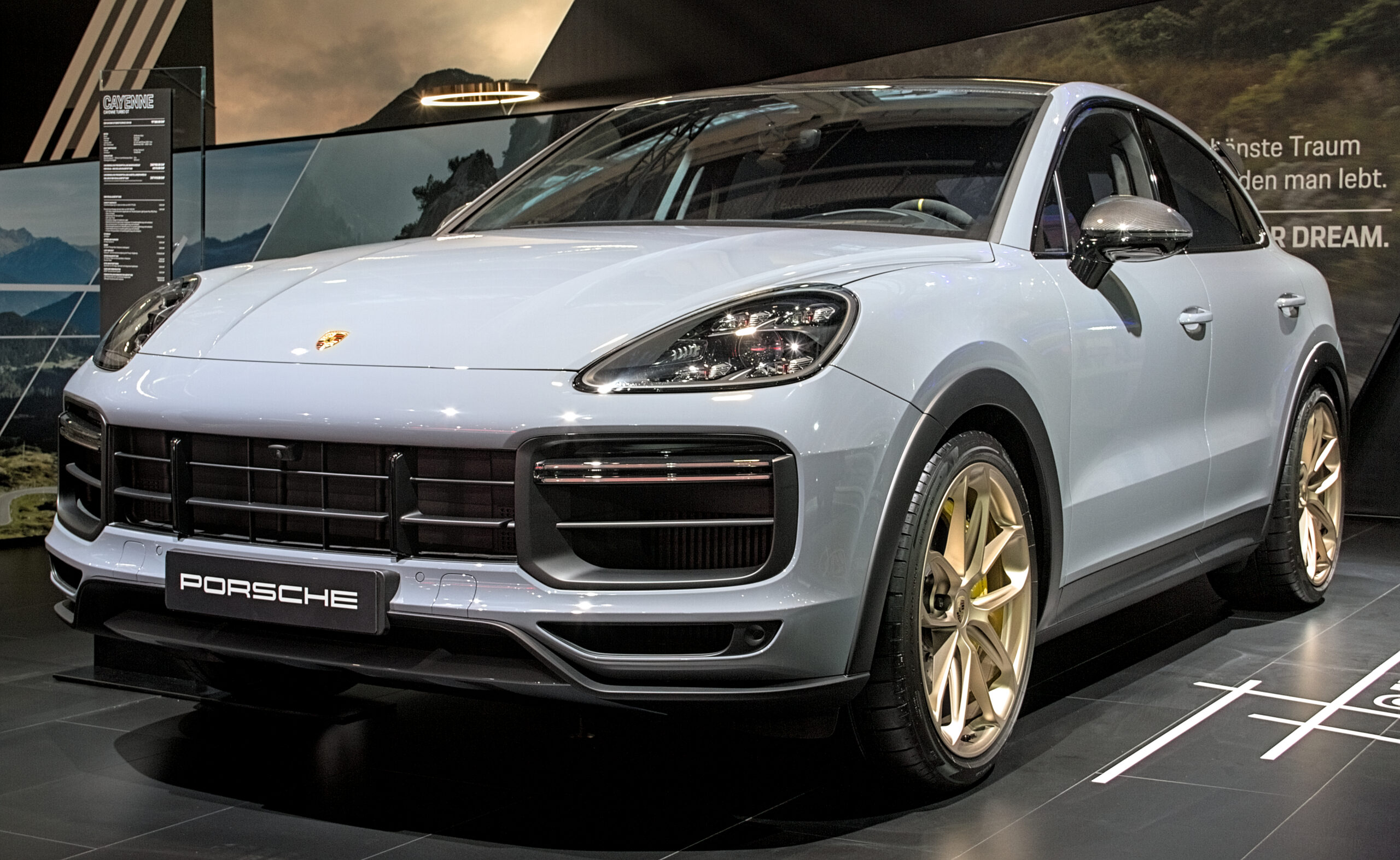
6. Porsche Cayenne
The Porsche Cayenne stands as an emblem of performance in the SUV segment, renowned for its powerful engine options, on-point handling, and luxurious interior. It has successfully blended the practicality of an SUV with the thrilling dynamics expected of a Porsche. However, like many high-performance luxury vehicles, the Cayenne has a less glamorous side when it comes to long-term ownership: its significantly high repair costs.
Data from RepairPal paints a clear picture of the Cayenne’s reliability challenges, rating it at a mere 1.5 out of 5. This low score suggests that owners are likely to encounter repair jobs more frequently than with many other vehicles. The probability of a Cayenne needing a major repair within a ten-year ownership period is a striking 60.9%, a figure that should give any potential buyer pause.
The financial implications of these frequent and potentially major repairs are substantial. The average annual repair cost for the Porsche Cayenne is estimated at $1,231. This amount is considerably higher than the general automotive average, which RepairPal places at $807. Such a disparity highlights the premium required to keep this high-performance luxury SUV running in its best shape.
These elevated costs are not just due to the frequency of repairs but also the inherent nature of Porsche engineering. The intricate designs, specialized parts, and the necessity for expert mechanics familiar with the brand’s specific diagnostic tools all contribute to the higher expenses. Owners often face increased costs due to premium materials unique to the brand, requiring costly manufacturer-approved replacements and highly skilled labor.
Having dissected the formidable repair costs associated with the initial six high-maintenance vehicles, our journey through the automotive landscape continues. We’ve seen how cutting-edge technology, bespoke components, and intricate engineering, while contributing to an exceptional driving experience, invariably lead to substantial financial commitments in the service bay. Now, we turn our attention to another half-dozen notorious models, each presenting its own unique set of costly challenges for the unwary owner.
From the potent luxury of BMW’s performance SUV to the specialized needs of a commercial van, these vehicles further underscore the critical importance of factoring long-term ownership costs into any purchase decision. Our aim remains to equip you, the discerning driver and automotive enthusiast, with the comprehensive knowledge needed to navigate these potential money pits. Let’s delve into the next segment of cars that, despite their undeniable appeal, might just leave you regretting your purchase when the repair bills start rolling in.
Car Model Information: 2020 Porsche Cayenne Base
Name: Porsche Cayenne
Manufacturer: Porsche
Production: August 2002–present
ModelYears: 2003–present
Class: crossover SUV
Layout: Front-engine, four-wheel-drive
Categories: 2010s cars, 2020s cars, All-wheel-drive vehicles, All articles needing additional references, All articles with dead external links
Summary: The Porsche Cayenne is a series of automobiles manufactured by the German company Porsche since 2002. It is a luxury crossover SUV, and has been described as both a full-sized and a mid-sized vehicle. The first generation was known within Porsche as the Type 9PA (955/957) or E1. It was the first V8-engined vehicle built by Porsche since 1995, when the Porsche 928 was discontinued. It is also Porsche’s first off-road variant vehicle since its Super and Junior tractors of the 1950s, as well as the first production Porsche with four doors. Since 2014, the Cayenne has been sold alongside a smaller Porsche SUV, the Macan.
The second-generation Cayenne (Type 92A or E2) was unveiled at the 2010 Geneva Motor Show in March. The Cayenne shares its platform, body frame, doors, and electronics with the Volkswagen Touareg and Audi Q7. It received a facelift in 2014 with minor external changes, and introduced a new plug-in E-Hybrid version with its public launch at the Paris Motor Show. Since 2008, all engines have featured direct injection technology. The third generation (Type 9YA or E3) was unveiled in 2017 in the German city of Stuttgart.
Get more information about: Porsche Cayenne
Buying a high-performing used car >>>
Brand: Porsche Model: Cayenne
Price: $43,490 Mileage: 35,240 mi.
Read more about: Don’t Waste Your Cash: 6 SUVs Prone to Costly Early Fixes
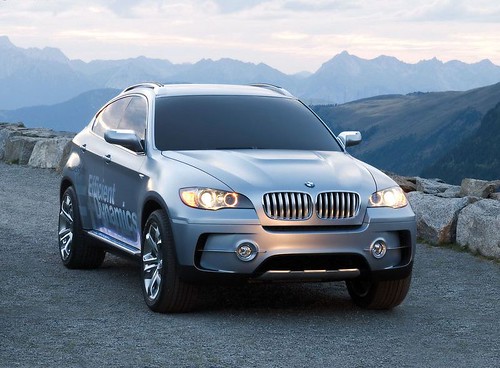
7. BMW X6 M
The BMW X6 M is a compelling blend of SUV practicality and high-performance sports car exhilaration, often a dream for those seeking both luxury and dynamic driving. However, as with many vehicles from BMW’s ‘X’ series, its sophistication is matched by a propensity for expensive repairs. This powerful machine, designed for superior performance, relies on advanced engineering and specialized components that are costly to maintain and repair.
Data from RepairPal assigns the BMW X6 M a 2-star reliability rating, a clear indicator that owners might face more frequent and significant repair events. This figure aligns with the broader observation that luxury and imported vehicles universally demand more expensive parts and labor, a fundamental truth that applies directly to the intricate design of the X6 M. The specialized tools and diagnostic equipment required for BMW’s complex systems further elevate labor costs, ensuring that even routine interventions carry a premium.
According to AutoList, the probability of the BMW X6 M needing a major repair within its lifetime stands at a notable 54.6%. This statistic underscores the financial risk involved in owning such a vehicle. With an average annual repair cost of $1,206, the X6 M firmly establishes itself as one of the most expensive SUVs to maintain, placing it considerably above the overall automotive average. Prospective owners must be prepared for this substantial annual outlay to keep it in peak condition.
The high-performance nature of the X6 M’s engine and drivetrain, while delivering thrilling acceleration, also means that repairs to these highly stressed components can be particularly exorbitant. Furthermore, the reliance on proprietary systems and advanced electronics common across BMW models means that even seemingly minor issues can necessitate costly, expert intervention. This combination of complex parts, specialized labor, and higher repair frequency makes the X6 M a significant financial commitment.
Car Model Information: 2024 Ford Mustang GT Premium
Name: BMW X6
Caption: BMW X6 (G06)
Manufacturer: BMW
Production: December 2007 – present
ModelYears: 2008–present
Class: Executive car,crossover SUV
BodyStyle: coupé SUV
Layout: Front-engine, four-wheel-drive
Related: BMW X5
Categories: 2000s cars, 2010s cars, 2020s cars, All-wheel-drive vehicles, All Wikipedia articles written in British English
Summary: The BMW X6 is a mid-size luxury crossover SUV by German automaker BMW. The BMW X6 is the originator of the sports activity coupé (SAC), referencing its sloping rear roof design. It combines the attributes of an SUV (high ground clearance, all-wheel drive and all-weather ability, large wheels and tires) with the stance of a coupé (styling featuring a sloping roof). It is built in BMW’s North American plant in Greer, South Carolina alongside the BMW X5, whose platform it shares. Prior to the release of the X7, the X6 was considered a flagship SUV for BMW.
The first generation (E71) was released for sale in April 2008 for the 2008 model year, while the second-generation X6 (F16) was launched at the Paris Motor Show in 2014. The third-generation X6 was revealed in July 2019.
Get more information about: BMW X6
Buying a high-performing used car >>>
Brand: BMW Model: X6 M
Price: $48,997 Mileage: 24,328 mi.
Read more about: 15 Classic Cars You Might Want To Skip: An Expert Guide for Discerning Collectors

8. Porsche Macan
As a compact SUV bearing the illustrious Porsche badge, the Macan delivers engaging driving dynamics and premium interior appointments, making it a highly desirable vehicle. Yet, like its larger siblings in the Porsche lineup, the Macan comes with an inherent caveat: a high ownership cost primarily driven by its substantial repair expenses. This is a consistent theme across the Porsche brand, which consistently ranks among the most expensive brands to maintain.
The RepairPal reliability rating for the Porsche Macan stands at a mere 1.5 out of 5, indicating that it is significantly more prone to requiring repairs compared to many other vehicles on the market. This low score should give potential buyers pause, as it directly translates into a higher likelihood of encountering unforeseen mechanical issues that will necessitate professional attention.
Delving into the financial impact, the average annual repair cost for the Porsche Macan is estimated at $1,265. This figure is not only considerably higher than the general automotive average but also positions it as one of the priciest compact SUVs to maintain. Such elevated costs are a direct reflection of Porsche’s philosophy of precision engineering and the use of high-end materials, which, while enhancing performance, inevitably drive up the cost of replacement parts.
Furthermore, estimates suggest there is a striking 60.9% chance that a Porsche Macan will require a major repair within ten years of ownership. This high probability of significant issues, combined with the expensive nature of Porsche parts and specialized labor, means that Macan ownership demands a robust rainy-day fund. It’s a clear example of how premium engineering can, ironically, lead to premium repair bills.
Car Model Information: 2017 Porsche Macan Base
Name: Porsche Macan
Manufacturer: Porsche AG
Production: February 2014 – present
ModelYears: 2015–present
Class: Compact luxury crossover SUV
BodyStyle: SUV
Caption: 2024 Porsche Macan 4 Electric
Categories: All-wheel-drive vehicles, All Wikipedia articles written in British English, All articles needing additional references, All articles with unsourced statements, Articles needing additional references from September 2025
Summary: The Porsche Macan is a compact luxury crossover SUV (D-segment) produced by German manufacturer Porsche since 2014. It is the smaller SUV from Porsche below the Cayenne. The first-generation Macan entered production from February 2014 with petrol and diesel engine options. In 2024, Porsche released the second-generation Macan which is a battery electric vehicle built on the dedicated Premium Platform Electric (PPE) EV platform. The first-generation and second-generation Macan will be marketed side-by-side, providing multiple powertrain options for consumers.
Since 2015, its first full year in the market, the Macan has been the best-selling Porsche model globally ahead of the larger Cayenne.
Get more information about: Porsche Macan
Buying a high-performing used car >>>
Brand: Porsche Model: Macan
Price: $24,891 Mileage: 56,317 mi.
Read more about: Beyond Billions: A Deep Dive into Bill Gates’ Unexpected Car Collection – From Rare Porsches to Eco-Friendly EVs and Everyday Rides
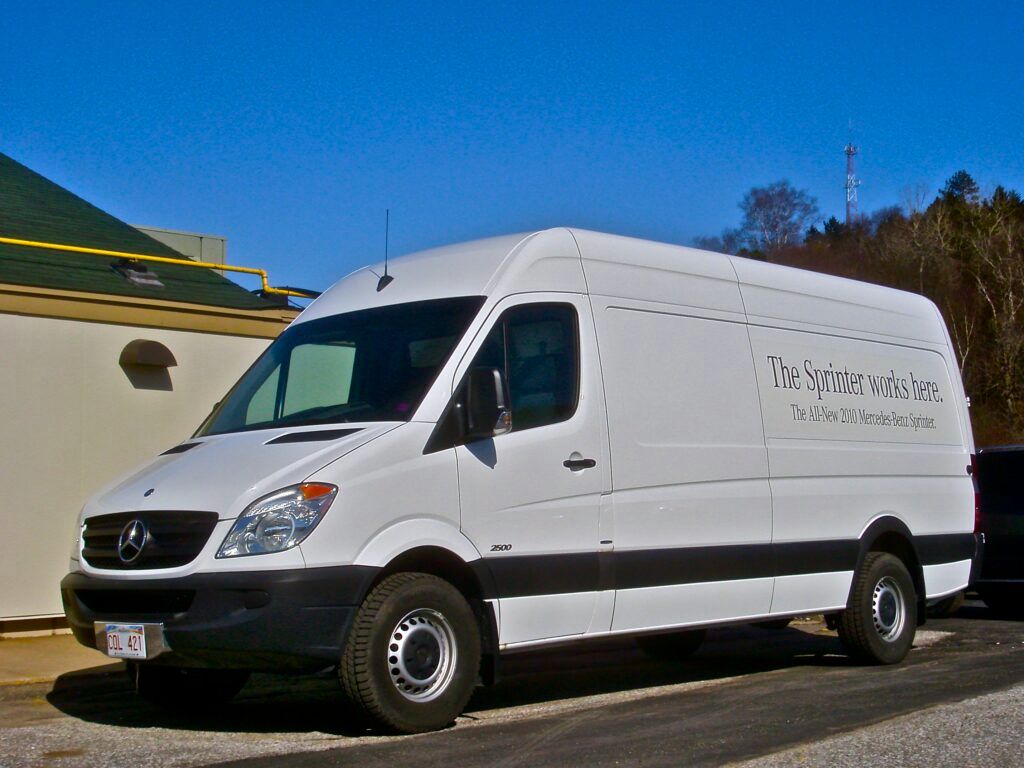
9. Mercedes-Benz Sprinter Van
The Mercedes-Benz Sprinter Van is a ubiquitous sight in commercial and recreational sectors, celebrated for its versatility, robust build quality, and array of sizes catering to diverse occupational needs. Its German engineering promises durability, yet this flexibility and sophisticated design come with a significant financial challenge when it comes to long-term repairs. Owners often find that maintaining a Sprinter Van is a considerably more expensive undertaking than anticipated.
The context reveals that Mercedes-Benz, while just escaping the top five, still ranks as the sixth most expensive brand to maintain and repair, with high annual costs compared to Japanese and Korean counterparts. This is attributed to the “over-engineered” nature of German cars, which leads to a much more complex design. This complexity in the Sprinter Van, particularly in its engine and advanced electronic systems, means that diagnostic and repair procedures can be intricate and time-consuming.
For those considering a Sprinter Van, the statistics are eye-opening: there is a 56.7% risk of needing an extensive repair within ten years of purchase. This probability is notably high for a vehicle often relied upon for commercial operations. Such extensive repairs typically involve expensive replacement parts that are often proprietary to Mercedes-Benz, further contributing to the overall cost.
The financial implications of these potential repairs are substantial, with the estimated repair cost for the Sprinter Van over a ten-year period reaching a sizable $18,364. This figure represents a significant investment that potential owners must factor into their budget. It highlights the critical choice between the Sprinter’s excellent performance and versatility versus the substantial long-term financial commitment required to keep it on the road.
Car Model Information: 2021 Nissan Rogue SL
Name: Mercedes-Benz Sprinter
Caption: Mercedes-Benz Sprinter (Third generation)
Manufacturer: ubl
Aka: Freightliner Sprinter (2001–2021),Dodge Sprinter (2003–2009),Volkswagen Crafter (2006–2017)
Production: 1995–present
ModelYears: 1995–present (Europe) , 2002–present (North America)
Assembly: Düsseldorf,Tiaret,Nizhny Novgorod
Class: Light commercial vehicle,Full-size van
BodyStyle: vehicle door,pickup truck,crew van,minibus
Related: Volkswagen Crafter,Volkswagen Transporter LT
Successor: Fiat Ducato#Ram ProMaster
Layout: FF layout,FR layout,F4 layout
Sp: uk
Predecessor: Mercedes-Benz TN,Dodge Ram Van,Mercedes-Benz Vario
Categories: 1990s cars, 2000s cars, 2010s cars, All articles needing additional references, All articles with unsourced statements
Summary: The Mercedes-Benz Sprinter is a light commercial vehicle (van) built by Mercedes-Benz Group AG of Stuttgart, Germany as a large van, chassis cab, minibus, and pickup truck. In the past, the Sprinter had been sold under the Mercedes-Benz, Dodge, and Freightliner nameplates. In the U.S., it was built from complete knock down (CKD) kits by Freightliner. Re-badged and re-engined Sprinters were also sold by Volkswagen Commercial Vehicles as the Volkswagen LT and the Volkswagen Crafter. They are now primarily marketed by Mercedes-Benz.
In the Mercedes-Benz van lineup, the Sprinter is the largest model offered, followed by the mid-size Vito (aka Viano, V-Class, and EQV) and small Citan.
Get more information about: Mercedes-Benz Sprinter
Buying a high-performing used car >>>
Brand: Mercedes-Benz Model: Sprinter Van
Price: $20,995 Mileage: 117,217 mi.
Read more about: Beyond the Fretboard: Unleashing Eddie Van Halen’s Epic Garage of Rocking Rides and Raw Power
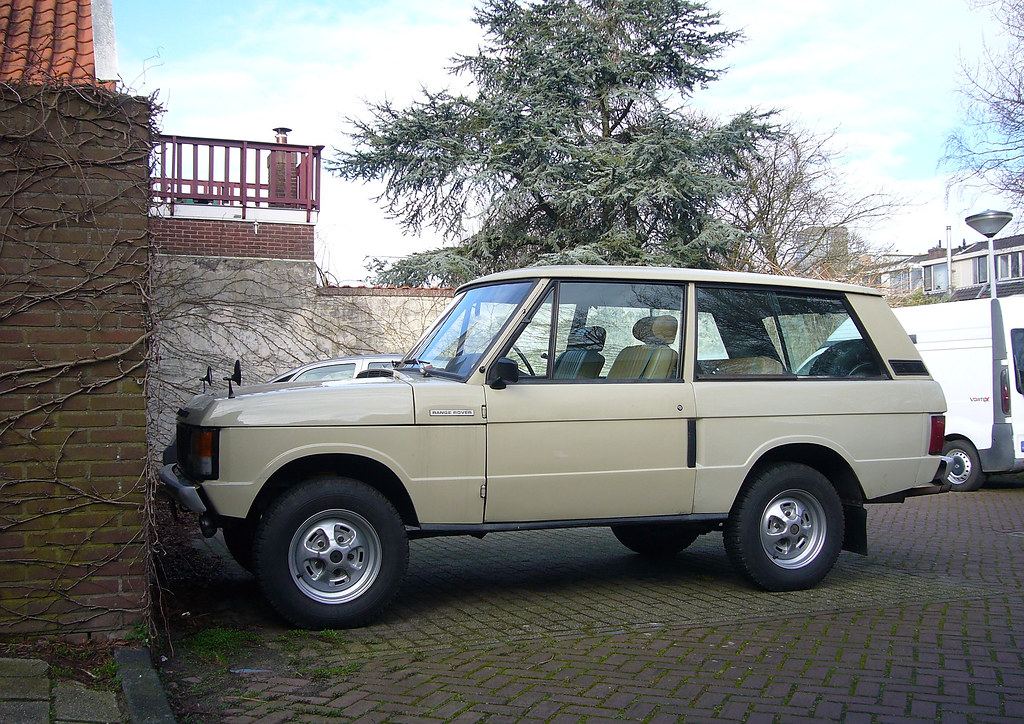
10. Land Rover Range Rover
The Land Rover Range Rover stands as a towering symbol of full-size luxury combined with unparalleled off-road prowess, a vehicle that epitomizes both opulence and adventure. This dream vehicle, however, demands a ‘BIG’ financial commitment when it transitions from the showroom to the service bay, with its average annual repair cost mirroring its imposing size. Maintaining the Range Rover in its optimum condition requires significant annual outlays.
RepairPal data paints a clear picture of the Land Rover Range Rover’s reliability challenges, assigning it a rating of just 2 out of 5. This low score suggests that owners are statistically more likely to encounter repair needs more frequently than with many other vehicles. As one of the most expensive brands to maintain and repair, with an average annual cost of $1,174 for Land Rover overall, the Range Rover perfectly exemplifies this trend.
The average annual repair cost for this majestic SUV is approximately $1,258, a figure substantially higher than the overall average. Moreover, the probability of it requiring a major repair within a decade of ownership stands at a significant 50.6%, underscoring the considerable financial risk involved. These issues are often rooted in common problems that afflict the brand, such as complex air suspension issues and intricate electrical faults, both of which can easily run into thousands of dollars to rectify.
The advanced systems that enable its luxurious ride and array of features are precisely what make their repair so expensive, requiring highly specialized diagnostic tools and expertise. Like other high-end European vehicles, the Range Rover frequently necessitates the attention of factory-trained technicians. These specialists, with their brand-specific training and unique repair procedures, command higher labor rates compared to services at standard repair shops, solidifying the Range Rover’s position as a vehicle with substantial ongoing costs.
Car Model Information: 2021 Nissan Rogue SL
Caption: 2022 Range Rover SE P440e (L460, fifth generation, United Kingdom)
Aka: unbulleted list
Name: Range Rover
Manufacturer: unbulleted list
Production: 1969–present
Assembly: unbulleted list
Class: unbulleted list
Layout: Front-engine, four-wheel-drive layout
Sp: uk
Categories: 1980s cars, 1990s cars, 2000s cars, 2010s cars, 2020s cars
Summary: The Land Rover Range Rover, generally shortened to Range Rover, is a 4WD luxury mid to full size crossover marque and sub-brand of Jaguar Land Rover, owned by India-based Tata Motors. The Range Rover line was launched in 1970 by British Leyland and since 2022 is in its fifth generation.
Additional models have been launched under the Range Rover name, including the Range Rover Sport, Range Rover Evoque, and Range Rover Velar.
Get more information about: Range Rover
Buying a high-performing used car >>>
Brand: Land Rover Model: Range Rover
Price: $20,995 Mileage: 117,217 mi.
Read more about: 15 Classic Cars You Might Want To Skip: An Expert Guide for Discerning Collectors
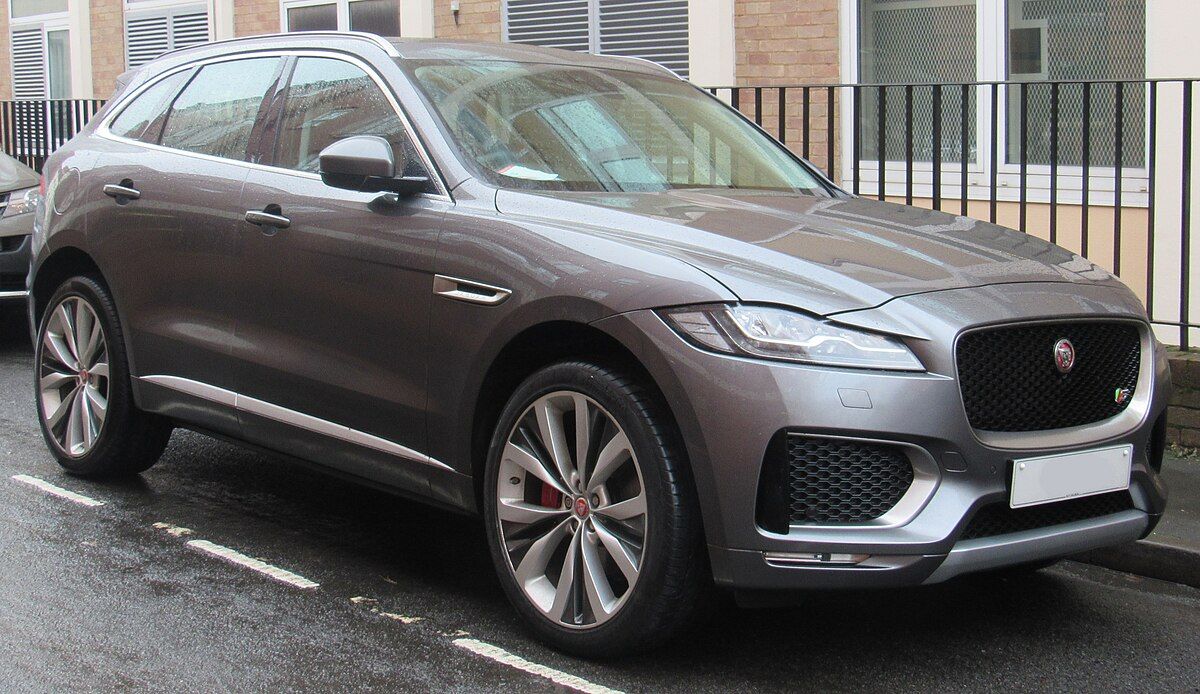
11. Jaguar F-Pace
The Jaguar F-Pace is a visually striking and performance-oriented SUV that captures the attention of many automotive enthusiasts, particularly those looking for a luxury SUV without the steeper initial buying cost of some competitors. While its performance impresses, the F-Pace carries a hidden long-term financial burden in the form of elevated repair costs, a characteristic common across the Jaguar brand.
Despite its alluring purchase price, the ownership experience can quickly become costly. While the NHTSA has yet to assign it a specific reliability rating, the existence of two recalls and six complaints already signals potential areas of concern for owners. These early indicators, even without a formal rating, suggest that the F-Pace might not be as trouble-free as one would hope from a luxury vehicle.
Jaguar, as a brand, consistently ranks among the most expensive to maintain and repair, with an average annual cost of $1,123 according to RepairPal. This positions it just behind Porsche and Land Rover in terms of overall expense, clearly indicating that F-Pace owners should anticipate substantial service bills. The intricate designs, premium materials, and specialized components inherent to Jaguar engineering directly contribute to these higher costs.
According to AutoList’s estimates, a prudent owner of a Jaguar F-Pace should plan to have a substantial “rainy-day fund” worth $16,103 set aside for the ten years following the purchase. This significant figure accounts for the probable need for major repairs and the high cost of parts and labor associated with the brand. It’s a sobering reminder that an attractive sticker price can often mask considerable long-term financial commitments.
Car Model Information: 2021 Jaguar F-PACE S
Name: Jaguar F-Pace
Manufacturer: Jaguar Land Rover
ModelCode: X761
Production: February 2016–present
Assembly: Solihull plant
Class: Compact crossover SUV
BodyStyle: SUV
Layout: ubl
Platform: JLR D7a
Related: Jaguar XE,Jaguar XF (X260),Range Rover Velar
Engine: ubl
Motor: 106 kW
Abbr: on
Transmission: Manual transmission,ZF 8HP transmission
Drivetrain: Mild Hybrid
Battery: Kilowatt-hour,Lithium-ion battery
Wheelbase: 2874 mm
Length: 4731 mm
Width: 1936 mm
Height: 1667 mm
Weight: Convert
Designer: Ian Callum
Sp: uk
Categories: 2020s cars, Articles with short description, CS1 maint: archived copy as title, Cars introduced in 2016, Commons category link from Wikidata
Summary: The Jaguar F-Pace (X761) is a compact luxury crossover SUV made by Jaguar Land Rover, a British car manufacturer, under their Jaguar marque. It is the first Jaguar model in the SUV class. It was formally announced at the 2015 North American International Auto Show in Detroit, with sales commencing in 2016 following an unveiling at the 2015 International Motor Show Germany in Frankfurt.
The design of the F-Pace is based on the Jaguar C-X17 concept car, which was unveiled on September 9, 2013, at the Frankfurt Motor Show. The 2017 Jaguar F-Pace has been named the honorary winner of the 2017 World Car of the Year and World Car Design of the Year Awards at the New York International Auto Show. The F-Pace is built at Jaguar Land Rover’s Solihull plant along with the Range Rover Velar and employs an additional 1,300 workers.
Get more information about: Jaguar F-Pace
Buying a high-performing used car >>>
Brand: Jaguar Model: F-Pace
Price: $29,451 Mileage: 23,204 mi.
Read more about: Buyer Warning: 9 Sports Cars That Become Reliability Nightmares Before 50,000 Miles
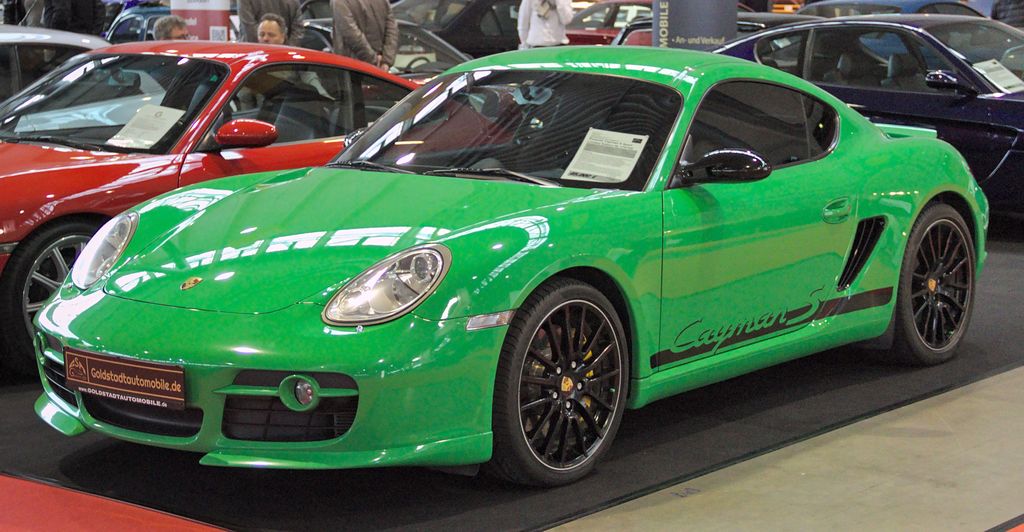
12. Porsche Cayman
The Porsche Cayman, with its sleek aesthetics and dynamic performance, stands out as one of the best luxury compact cars, offering an exhilarating driving experience. It embodies the precision engineering that Porsche is renowned for, delivering a level of driver engagement that is hard to match. However, beneath this polished exterior lies a financial reality that prospective owners must squarely confront: its notably high maintenance and repair costs.
The RepairPal reliability rating for the Porsche Cayman is just 2 out of 5, a score that suggests this desirable compact car is quite likely to need repair jobs frequently. This lower-than-average reliability, combined with Porsche’s overall ranking as the most expensive brand to maintain and repair, with an average annual cost of $1,192, places the Cayman firmly on our list of cars that can quickly drain an owner’s wallet.
The average annual maintenance cost for the Porsche Cayman is estimated at $1,135. This figure is significantly higher than what one would typically expect for a compact vehicle, highlighting the premium associated with its specialized components and high-performance design. Even routine service for a Porsche, as noted earlier, tends to be two or three times costlier than for standard cars, owing to the specialized tools, fluids, and expertise required.
The high-performance engine, intricate suspension, and advanced electronic systems, while contributing to the Cayman’s stellar driving characteristics, are also the primary drivers of its elevated repair expenses. Should these highly specialized systems require attention, owners will inevitably face substantial bills for both parts and the highly skilled labor necessary to service such a meticulously engineered machine. For all its appeal, the Cayman is a vehicle that demands a deep financial commitment beyond its purchase price.
### Essential Strategies and Expert Advice to Mitigate High Repair Costs
The revelations about these 12 vehicles, and indeed many luxury and high-performance models, underscore a fundamental truth in car ownership: an informed approach is your best defense against unexpected financial setbacks. While some repair expenses are an unavoidable part of owning a complex machine, especially one that offers a premium experience, there are actionable steps every car owner can take to significantly reduce costs and mitigate potential financial headaches. Adopting a proactive mindset and making smart choices can save you thousands down the road.
Firstly, the most fundamental advice is to **stay on top of regular maintenance**. Preventative care, such as consistent oil changes, timely tire rotations, and diligent brake inspections, ensures your car runs smoothly and, critically, prevents minor issues from escalating into catastrophic and costly repairs. As the experts at RepairPal and CoPilot emphasize, “getting an oil change every six months may sound tedious and expensive, it’s still much cheaper than replacing a blown head gasket or cylinder head,” which are among the most expensive car repairs. Adhering to your owner’s manual recommended maintenance schedule is non-negotiable for long-term savings.
Another powerful financial buffer is to **invest in extended warranties**. While not financially worthwhile for everyone, comprehensive warranties, particularly for luxury or high-tech vehicles prone to expensive repairs after the factory warranty expires (typically after year five), can provide invaluable protection against steep bills. Look for plans that specifically cover high-priced components like electric systems, drivetrain components, and other major assemblies that are common points of failure in complex vehicles.
Finding a **trusted, independent mechanic** who specializes in your car’s brand can offer substantial savings compared to dealership rates. These specialists often possess the specific knowledge and tools required for European or high-performance vehicles, but typically operate with lower overheads. Do your research, seek recommendations from other owners, and build a relationship with a shop that understands your vehicle’s unique needs.
For non-essential repairs, or when dealing with less critical components, **looking for OEM (Original Equipment Manufacturer) or quality used parts** can significantly reduce expenses without compromising integrity. Many reputable shops offer these options at lower prices than brand-new, dealer-sourced parts. While some critical components might warrant new parts directly from the manufacturer, exercising discretion can yield considerable savings.
It’s also crucial to **understand your insurance coverage** thoroughly. Comprehensive insurance, for instance, is relatively affordable and can cover damages caused by natural disasters like floods, tornadoes, hail, or even animal collisions, which can otherwise result in 100% of the replacement bill falling on your shoulders. While not covering mechanical failures, it’s a vital safety net for unforeseen external damage.
Finally, for those with some mechanical aptitude, **doing repairs yourself when possible** can save a substantial amount in labor costs. Simple fixes like replacing air filters, spark plugs, or windshield wipers are often straightforward and can bypass hourly labor rates that range from $100 to $260 an hour for professional mechanics. Even seemingly small DIY efforts accumulate into meaningful savings over time.
Car Model Information: 2016 Porsche Cayman GTS
Name: unbulleted list
Caption: Porsche Boxster Spyder (718)
Manufacturer: Porsche
Aka: unbulleted list
Production: unbulleted list
Assembly: unbulleted list
Class: Sports car
BodyStyle: unbulleted list
Related: unbulleted list
Layout: Rear mid-engine, rear-wheel drive layout
Predecessor: Porsche 968
Categories: All Wikipedia articles written in British English, All articles needing additional references, All articles with dead external links, All articles with unsourced statements, Articles needing additional references from August 2025
Summary: The Porsche Boxster and Cayman are mid-engine two-seater sports cars manufactured and marketed by German automobile manufacturer Porsche across four generations—as a two-door, two-seater roadster (Boxster) and a three-door, two-seater fastback coupé (Cayman).
The first generation Boxster was introduced in 1996; the second generation Boxster and the Cayman arrived in late 2005; and the third generation launched in 2012. Since the introduction of the fourth generation in 2016, the two models have been marketed as the Porsche 718 Boxster and Porsche 718 Cayman.
The nameplate Boxster is a portmanteau of boxer, a reference to its flat or boxer engine, and Speedster, a nod to the original Porsche Speedster of the 1950’s. The nameplate Cayman is an alternative spelling of caiman, a member of the alligator family.
In May 2025 Porsche North America confirmed the rumours that global “production for all current 718 Boxster and 718 Cayman variants, including RS models, is scheduled to end in October of” 2025. Porsche CEO Oliver Blume has confirmed future production of full-electric replacements but said they will arrive in the “medium term.”
Get more information about: Porsche Boxster and Cayman
Buying a high-performing used car >>>
Brand: Porsche Model: Cayman
Price: $79,980 Mileage: 16,833 mi.
Read more about: Unleashing Performance, Ensuring Protection: 12 Sports Cars Where Speed Meets Stellar Safety Ratings
While the allure of luxury, performance, or advanced technology in a vehicle is strong, an astute buyer looks beyond the sticker price. The true cost of car ownership encompasses a complex interplay of maintenance, insurance, and, most critically, potential repair bills. By understanding which vehicles are prone to exorbitant fixes and by proactively implementing strategies for prevention and cost mitigation, you can transform the potential regret of a costly purchase into the satisfaction of a well-managed investment. An informed decision now, guided by expert insights and a practical approach, is your ultimate safeguard against unwelcome financial surprises down the road.

